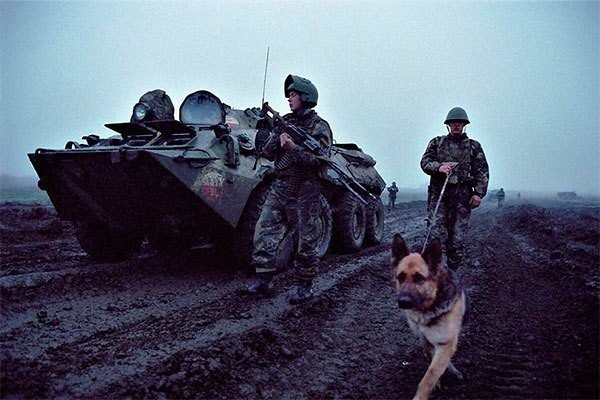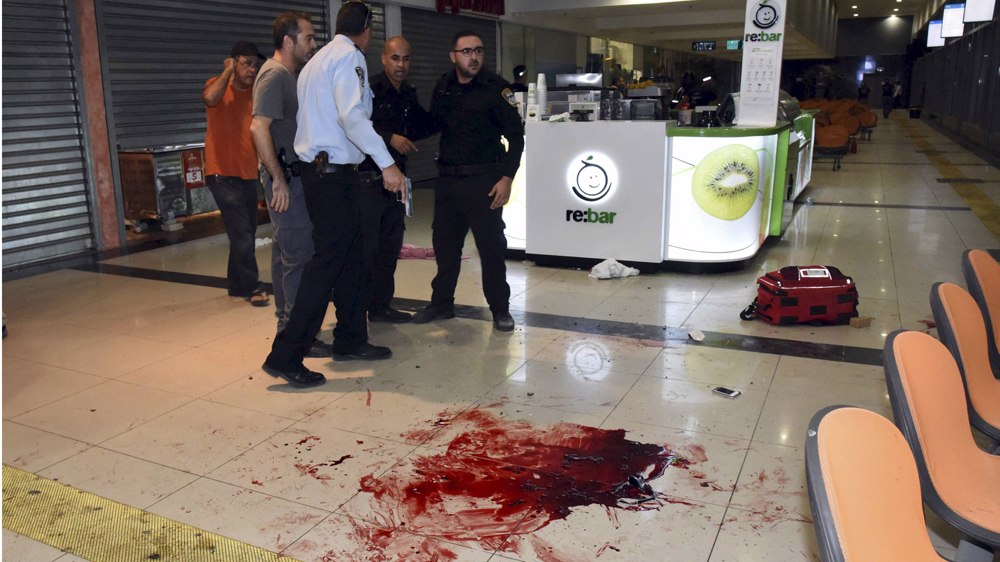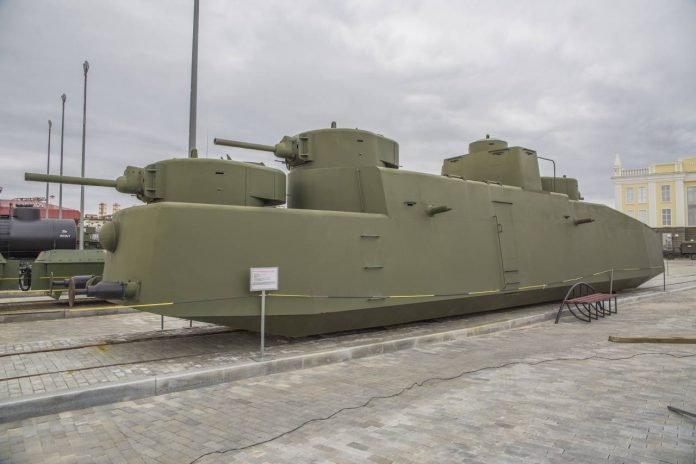
The appearance of this type of weapons, as the armored train, It revealed not only high efficiency of these trains, but also a number of significant shortcomings. Power armored trains allows them to break through the enemy defenses or to respond quickly to enemy offensive.
But just in case, if the rails were laid in the right direction. That is how the practice has shown the First World War.
But at the same time, an armored train were autonomous. too. Virtually no communication with the other units and formations, they often found themselves face to face with the enemy, and not always such a confrontation was successful for armored trains.
Whatever the firepower of armored, the value of the composition and the possibility of movement sharply reduced the protective capacity of the whole system and do a train mining field the enemy's batteries.
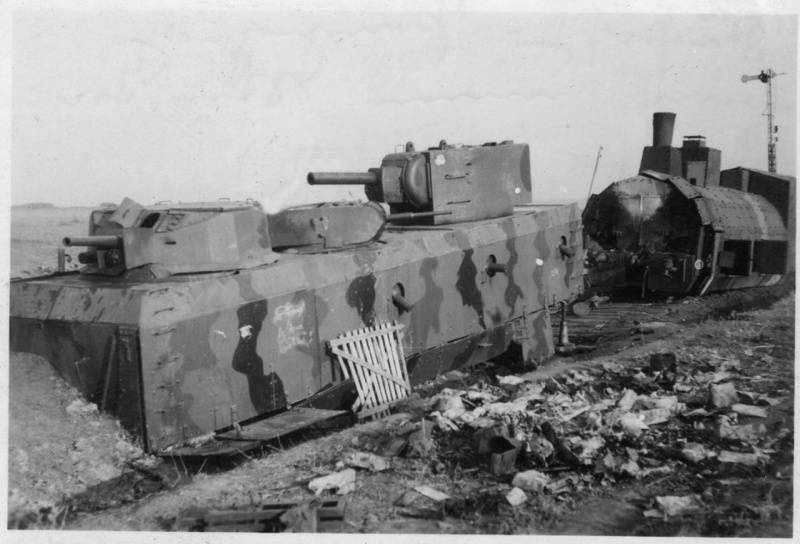
During the Second World added aviation…
And of course, acute was the question of coordination. Radio communication in trains has not spelled out (we are still talking about the First World), and the possibilities of the telegraph station as a method of communication with the trains were conditional, as the telegraph was working from station to station.
He played a role and weight of the armored train. The thing is, that it is a great weight was making it impossible to use these weapons everywhere. Not all branches of the road and have a normal "hold" armored train. Canvas simply collapses under train. Add to this the railway bridges…
In this way, the use of armored assault highlighted the need to train the next generation of armored vehicles. To be more precise, armored identified two lines of further development of the railway armor.
At first, needed bronedreziny is easy and fast to carry out reconnaissance missions and communication with headquarters. These machines should be high-speed, armored bulletproof armor, have a minimum firepower (one or two guns in view of the small number of crew) and, possibly, the ability to act outside the railway.
We have already talked about these machines. Bronedrezyna based armored pereobutsya.
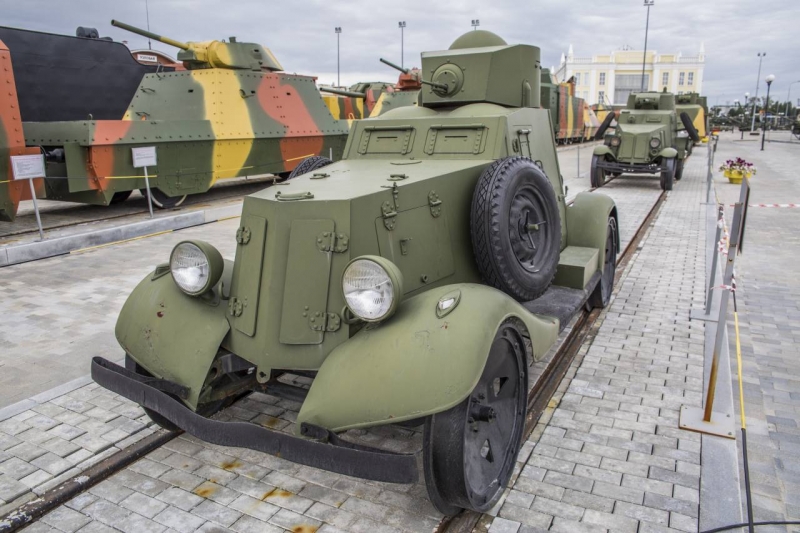
Secondly, as part of armored trains must be special bronevagony, equipped with not only powerful weapons, but also stand-alone engine. These cars should be used alone if necessary, offline.
AT 1916 year were the first examples of systems.
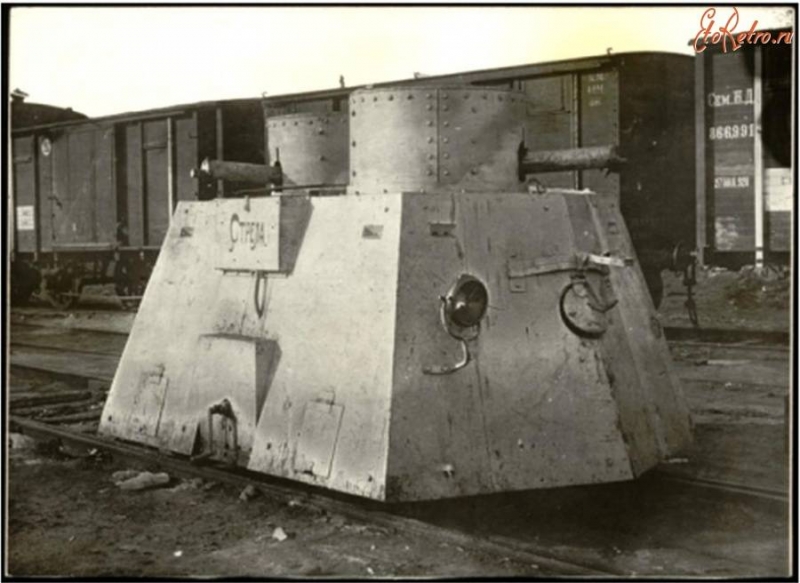
Lehkaya bronedrezyna «Arrow» unknown ensign design engineer third railway battalion was really stunning. Starting from appearance, exotic even today, not to mention the beginning of the 20th century. And finishing with decent firepower for a small car.
In the same year came the first bronevagon. Designers of a new type of armor steel Colonel Butuzov, Ensign technologist Tabur, Ensign and Technological Kelchitsky. The car was named «Zaamurec».
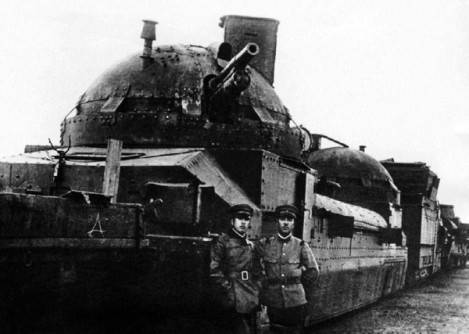
by the way, history of the use of this so fascinating bronevagona, that deserves to write a whole novel. Just stories strokes.
1917-year. «Zaamurec» used in the defense zone of the 8th Army of the Western Front in the beginning as the anti-aircraft gun, and the end of May as a self-propelled artillery. In September, sent to Odessa.
January 1918. «Zaamurec» It takes part in the side of the Bolsheviks in the uprising in Odessa. Engages in battle with the cadets and HAYDAMAKY from the station Odessa-Trading.
February 1918 year - bronevagon captured anarchists. For some time a gang of anarchists «collects indemnity in favor of Soviet power» along the railway.
In early March 1918, the anarchists faced with a detachment of sailors Polupanova. «Zaamurec» recaptured and included in the armored train «freedom or death». Until May continues to operate in the Odessa region.
In June 1918 of the year «Zaamurec» already on the Eastern Front. Participates in the battle of Syzran and Bugulma. Quite successfully used red.
22 July 1918 year red throw in the battles for Simbirsk «Zaamurec», which falls Czechs. upgraded. Replacement of 57mm cannon at «trehdyuymovki» Countdown. 1902 of the year. Used as part of the Czechoslovak armored train «Orlik». Successfully acts on TRANSSIB before leaving Czechs.
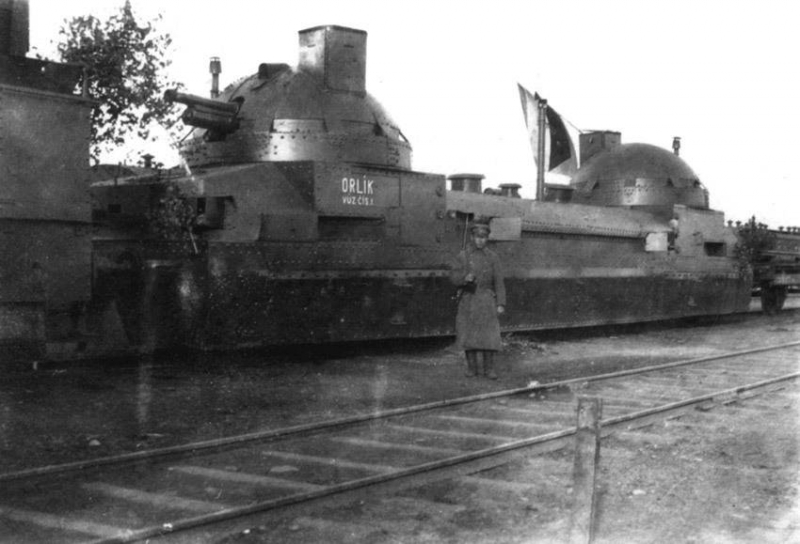
The Czechs handed the Whites in 1919 year. He remained in Vladivostok to 1921 of the year. After that was hijacked in Harbin, along with other White Guard armored trains. Then the trail is lost.
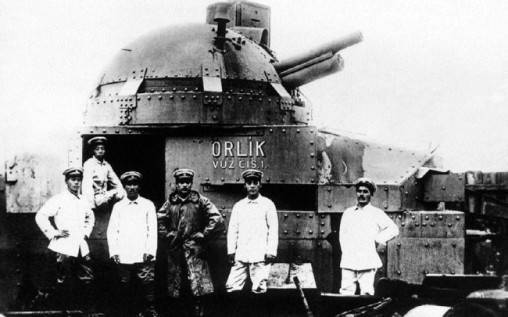
This is the background of the emergence of our today's hero. It's about motobronevagonah BIE, created in the USSR 1936 year. Why just about all? Just because, that all of these armored vehicles were created two. Both car have heroic history and deserve a story.
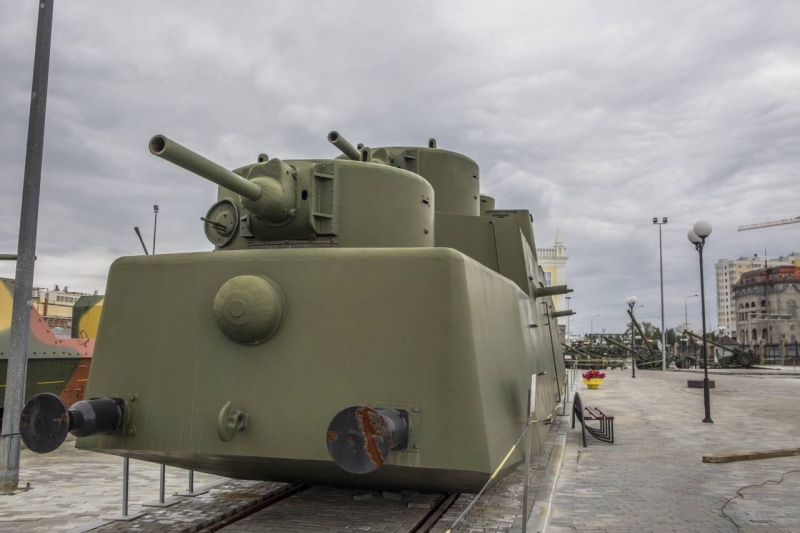
In the early 30s it became clear, the old armored train (BP) no longer meet the requirements of a modern army. Armored Directorate of the Red Army began to develop tactical and technical requirements for new machines.
This new requirements and were in June 1935 It was transferred to the Kirov plant in Special Design Bureau №2 under O. M. Ivanova. A special design team headed by A was created. E. Efimov. and is engaged directly bronevagonom.
We often only know the, who headed the Bureau or has been a chief designer. Today we have an opportunity to remember those, who himself created this car. FROM. P. Bogomolov, P. P. Ermolaev, L. E. Sychev, n. AT. Halkiolov, TO. AND. Kuzmin, P. P. Mikhailov, FROM. AT. Fedorenko, P. T. Soso, n. T. Fedorchuk.
The second half of the 30s in the Soviet Union was quite a difficult period. That is why the plans were grandiose. Create bronevagon to top 1936! Alas, but the task was impossible. And on the level of complexity of the problem, and the level of training of engineers and designers.
First bronevagon Kirov Plant presented to the test in the beginning of November 1936 of the year. After a long acquaintance with the new machine specialists ABTU Red Army, at the beginning 1937 it was decided to start 5 000-kilometer factory testing.
Again failure. The first runs January revealed the weakness of the individual units and mechanisms. Of particular concern is the chassis of the new machine. In particular, motor bogie axle box. Elimination of defects pushed factory test 12 February 1937 of the year.
But, despite the difficulties with the BIE №1, the factory has built the next car. Work directed engineer CSC-2 F. D. Smirnov. On the wagon planned to install a new conical tower with a 76.2-mm guns PS-3, provide an opportunity to move to the West-European track, strengthen the construction of the gearbox and freewheel, carry out work on the seal body to provide protection against toxic substances, mount a new telephone, devices dymopuska, monitoring devices and make some other changes.
Second bronevahon, BIE №2, He was accepted by the representative of the Red Army 17 April 1937 of the year. And on the same day it sent to the factory test. BIE number 01 It was placed at the disposal of armored refresher commanders of tank troops named Bubnov in Leningrad.
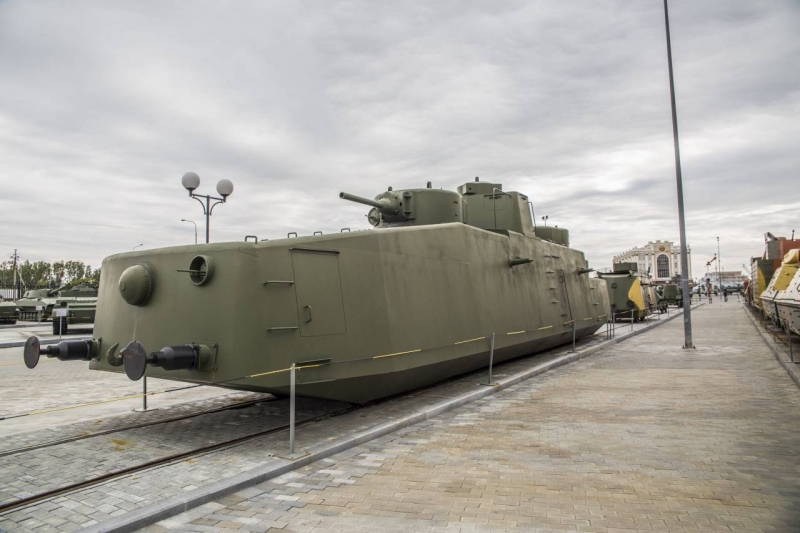
Despite the difficulties in the design and construction of the BIE, Red Army commanders demanded from the Kirov factory to produce initial batch of 10 bronevahonov.
The factory started to work in this direction at the end of 1937 of the year. They were made: chassis with engine and gearbox third BIE, 4 the main frame 4 more bronevagonov. In this work was stopped.
In fact, the current model of the BIE before July 1939 , was only the second car. but, car number 1 in late June 1939 He has been withdrawn from the course and is aimed at modernization in the Kolomna Plant. Command of the Red Army's efforts to increase the power of the army armor.
What exactly are the motobronevagon Kirov factory? Let us consider it more closely.
Motobronevagon consisted of armored housing, fastened to the frame, mounted on two bogies of railway type, connected by means of ball joints and pins. The front support carriage was, and the rear, with mounted engine and transmission - a leading.
Body armor motobronevahona svaryvalsya IZ 10-20 mm armor. For "better aerodynamics when driving," he was made "without sharp angles with smooth transitions".
Housing motobronevagona was installed on the main frame, riveted and profile of sheet iron. It is based on two longitudinal beams, riveted together by transverse bindings. Top frame closed metal sheets, in which the cutout on the motor bogie has been made.
Rear bogie had two axes, while both were leading. Bogie frame there was the bolster, perceived through ball heel housing load, and two roller bearing on each side. Wheelsets - locomotive type, both axles brake.
Leading on a stretcher trolley, above the main body frame, mounted engine M-17 with transmission;. Transmission was designed on the basis of units of the T-28, but, taking into account traffic conditions on the railway track machines, with a modified design of the gearbox.
overrunning clutch provides an independent rotation of the wheels of the motor shaft. Free wheeling allow overclocking machine, without reducing transmission, reduce engine speed to a minimum, not decelerating motovagona. Airborne transmission is a single stage gear reducer original design.
Radiators and spare fuel tank located on the left of the engine. The entire rear carriage units with closed metal casing located on it, the upper part of which was a diffuser for the air suction fan outwardly.
Besides, in the engine-transmission compartment is the main fuel tank, fan and compressor installation with petrol L6 / motor 2, as well as the control room number 2 (in the right back corner of the case).
Arming motobronevagona consisted of three towers T-28, installed in the front and middle part of the housing (branch number of towers 1, 2 and 3), four on-board machine guns Maxim (two on board) in typical ball mount, DT machine gun in the hull rear and the quadruple anti-aircraft machine gun (in the same compartment). The latter was sliding and could fire through the roof flap.
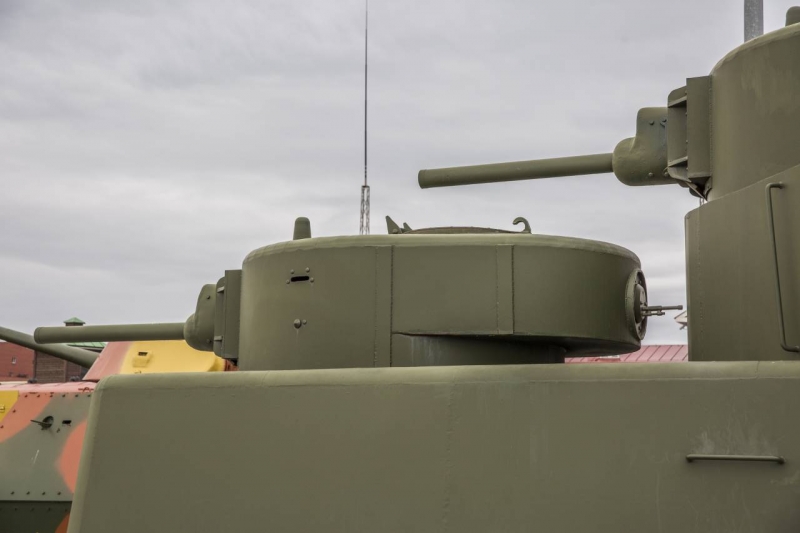
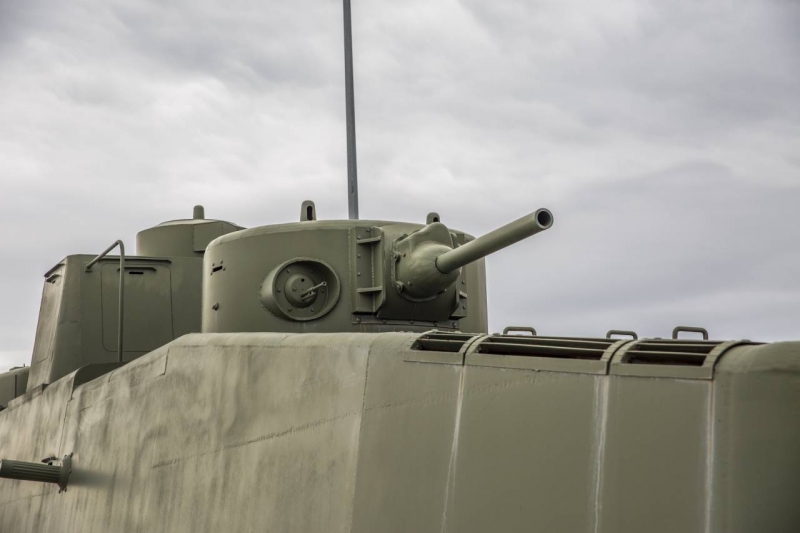
To provide additional anti-aircraft cover for the BIE often clung antiaircraft platform. Besides, bronevagon drove for a further two platforms with rails and sleepers for track renewal.
Interior layout was quite squeezed. BIE had no heating and ventilation. The ceiling was low, so the crew had to bend down. To get to the separation of the first tower had to wade through a pretty narrow hole of the second separation tower.
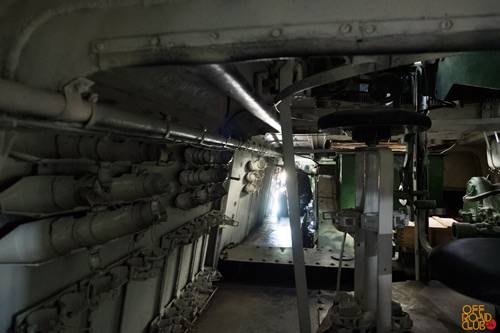
Inside the enclosure was divided into seven compartments - the first and second towers, anti-aircraft machine gun, commander and radio operator, prozhektornoe, the third tower and power pack. Landing crew had three doors - two sides in the middle and one on the right rear of the.
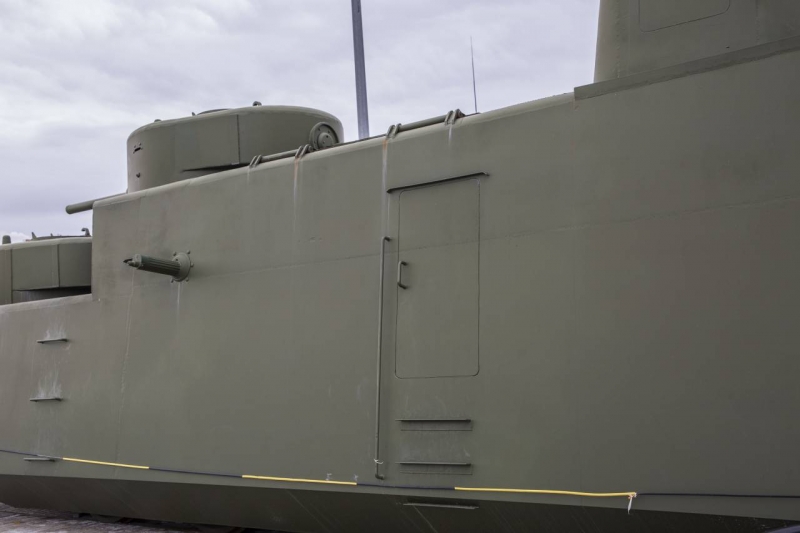
In the middle of the building has a commander's cabin, which houses the office of the driver number 1 and the place of commander. Last conducted surveillance of the battlefield through the rangefinder in a special turret, PTC device and a 10-fold telescope.
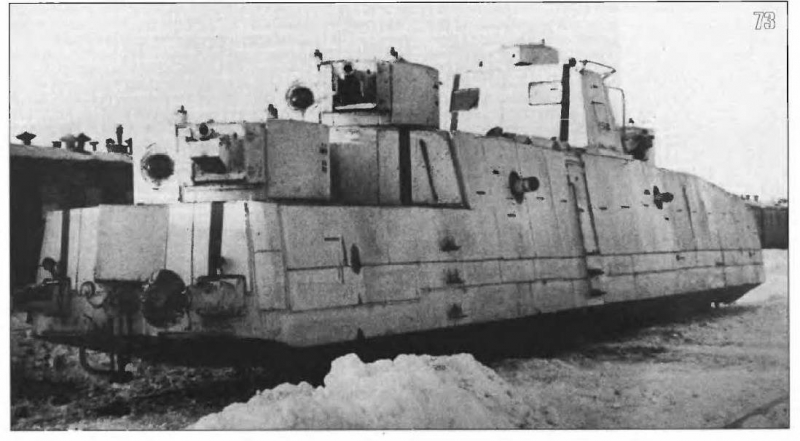
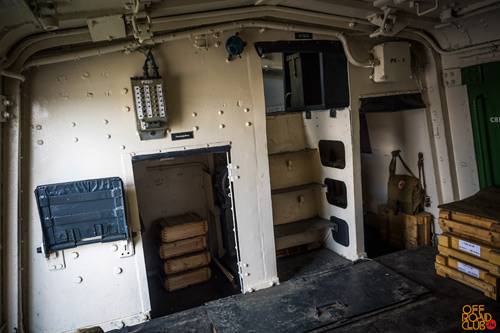
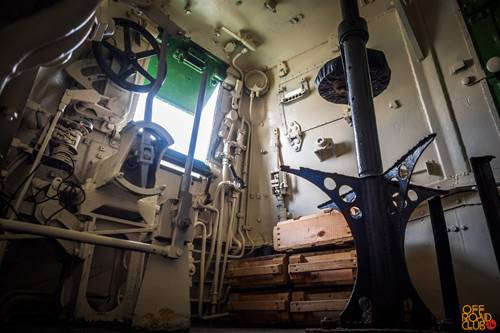
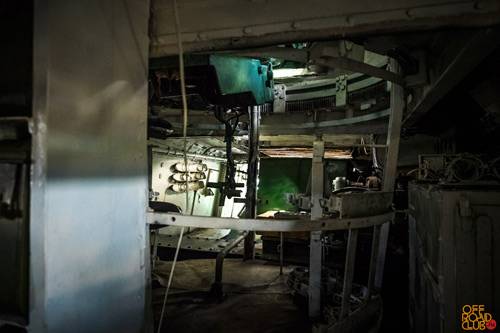
Under commander radio room was 71 with the radio-TK-2, handrail antenna which is attached around the commander's cabin.
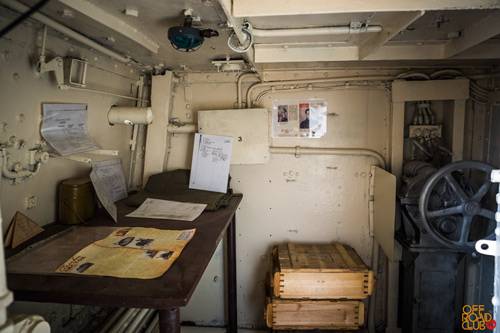
For commander deckhouse separation was floodlighting, which it was retractable floodlight marine type. Besides, in the front and rear walls of the housing motobronevagona mounted spotlights travel with lids armor, and on turrets - lights for night shooting.
Intercom motobronevagona carried out using a set of marine type on the telephone 10 subscribers, includes two switch - cutting in the commander and turret № 2, machine operator, and subscriber unit in the radio.
Motobronevagon equipped with brakes manually set, air and power. Electrical Power from two dynamos, as well as the eight batteries.
Structure motobronevagona second sample was virtually identical precursor - in the second sample well were tower T-28 guns with CT-28. BIE №02 was modernized gearboxes, improved design of internal equipment, internal connection to SPU-7p 10 subscribers.
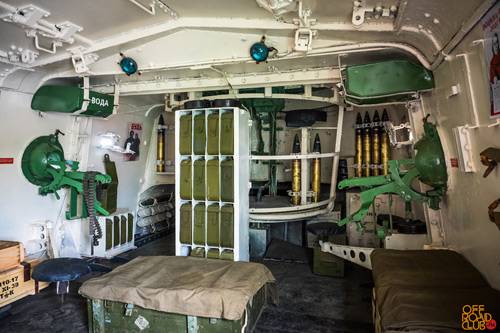
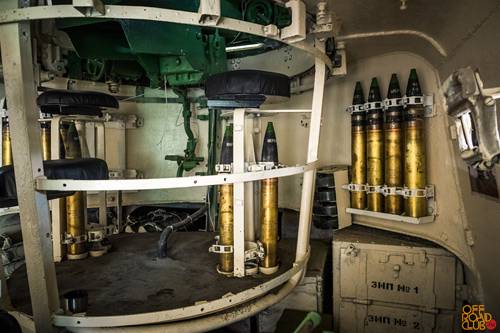
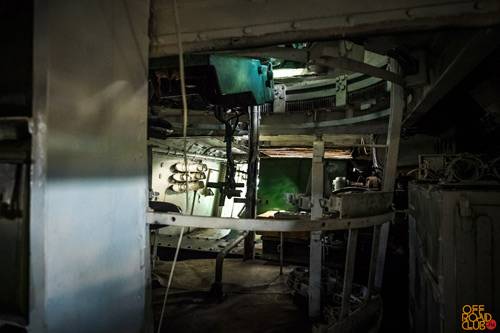
During the fighting, applies different painting motobronevagonov. Quite striking example - sand-pink striped camouflage. It was used in a wooded area on a granite embankment w / e ways.
How view, in the absence of the necessary knowledge, bronevagon can be easily mistaken for any «light armored train». Four, or even five cars is already part, has really train. That is why the two-speed performance characteristics listed in the IEB.
BIE were widely used during the Great Patriotic War. And, As we have already mentioned above, Both car. The truth is they fought in different directions. First bronevagon military fate gradually pushes south, and the second smashed the Germans in the north-west.
To begin with BIE № 1.
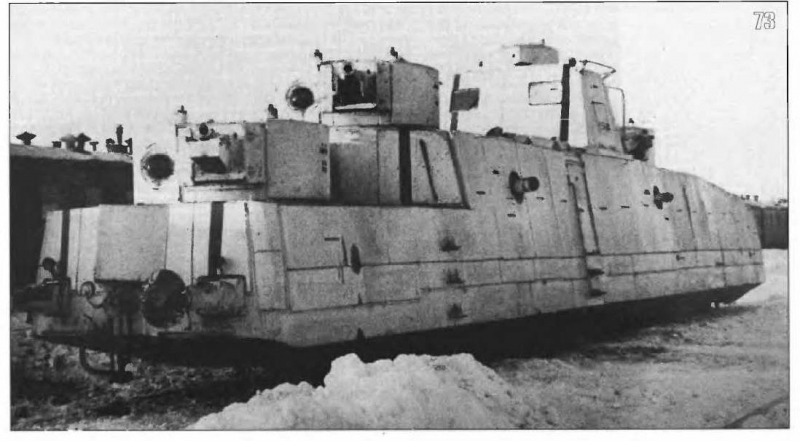
By the beginning of the war modernization of the car at the Kolomna plant has not been completed. but, already 25 July 1941 the year he was sent to Moscow to Podolsk factory. There has been a strengthening of body armor held - screening armored housing 15-20 mm bronelistami (the total thickness was armor 30-40 mm).
After forming the temporary crew (2 composition - 64 man) bronevagon was aimed at the disposal of the reserve regiment of armored trains. December 1941 , I became a member of the 30th division of armored trains.
28 February 1942 the year of the 30th separate armored train division was ordered to go down in the North-Western Front, and 5 March, he focused on the station Bylchino Kalinin railroad and became a member of the 34th Army.
During the period 16-18 March armored infantry supported the offensive on Lychkovo station. 18 in March as a result of the raid 9 Ju-88 bombers BIE №01 was damaged and was removed for restoration in the Yaroslavl locomotive factory.
23 May Division departed for Moscow, and from there 14 July 1942 year - in the 28-th army of the Stalingrad Military District. 20 August Division arrived in Astrakhan, a 27 August, crossed the Volga, He took up a position at the junction of the North Caucasus and Stalingrad Fronts.
3 September 1942 , the fire of armored division was reflected an attempt to cut off German units railway Kizlyar - Astrakhan, and then to the end of November 30 ODBP covered railroad from air attacks.
15 April 1943 , the Division I passed the 44th Army of the Southern Front, and he took the Rostov land - Taganrog. During June - August armored battalion fire support weapons infantry action, They fired at the German rear, boats at sea and goals in Taganrog. 29-30 August 30 ODBP supported Soviet units, leading the fight for Taganrog, after which he was taken to Rostov.
FROM 25 September 7 December 1943 year motobronevagon BIE number 01 undergoing repairs at Tambov locomotive repair works, then the 30th Division became part of the 51th Army of the 4th Ukrainian Front, and until April 1944 Year shelled the German positions on the Isthmus ChONGARSKIJj.
9-11 April 1944 the year of the 30th Division supported fire attack our troops on the Isthmus ChONGARSKIJj, and after breaking the German defense and liberation of the Crimea in May he entered into the Independent Coastal Army and concentrated in Simferopol.
Equally interesting fate of the second carriage.
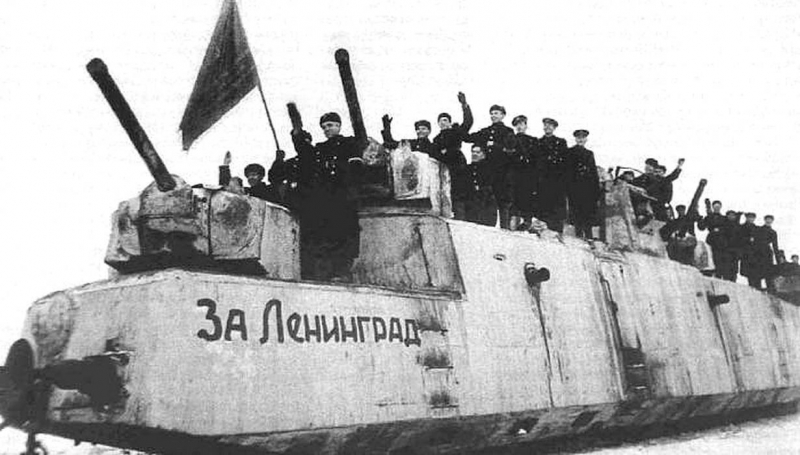
It was this car, who was in custody at a military warehouse №37 (Moscow) it was decided to test in combat conditions. After repairs at the Kirov plant (from 22 December 1939 year on 4 January 1940 of the year) and the formation of the crew from among the trainees refresher commanders of armored forces BIE sent to the Karelian Isthmus, at the disposal of the 7th Army of the Northwestern Front.
BIE acted independently, supporting artillery fire attack its troops in the vicinity of the station Perk-Jarvi. But 8 March BIE №02 gave 8th separate division of armored trains. FROM 10 March BIE suppress the firing points Finns to open positions in the area of railway halt Liimatta, diverting more fire artillery and mortar batteries.
Since the beginning of the Great Patriotic War motobronevagon BIE №02 was urgently brought into fighting shape. In early July, 1941 year formed the crew of the number of fighters and commanders LBTKUKS for him, and 20 July, he is attached to the armored train number 60 for joint action.
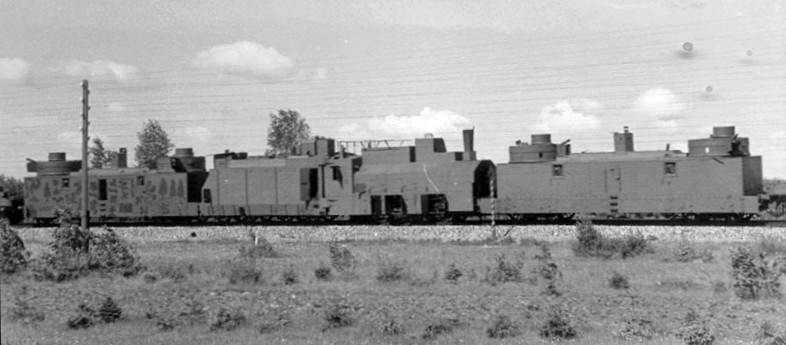 Armored train №60
Armored train №60
Up until the beginning of August and the BIE №02 armored train number 60 We support our troops in the areas Kingisepp - Moloskovitsy and Yastrebino - Moloskovitsy. 13 August motobronevagon came under intensive bombardment by German artillery, destroyed the railroad tracks, but I was able to get out of the firing zone.
18 August BIE and armored train number 60 transferred in the station area Chudovo, where they became part of the group of armored Major Golovacheva. FROM 21 by 29 August 1941 motobronevagon year in a group of fire support to their guns of the 48th Army.
30 August departed for repairs to Leningrad. After repair of the BIE №02 stayed in Leningrad, and an armored train number 60 after putting Mga moved to Kirishi, and later became a member of the Volkhov Front forces.
Further military bronevagona fate until the end of the war is closely linked to the city of Lenin. Almost all the most important operations of the blockade on the list of this machine. and an infinite number of repairs. But there is one detail, which I like to draw readers' attention.
Probably, insignificant detail. Especially given the maritime soul of Leningrad. A substantial and can. For the same reason. Staff directive of the Leningrad Front 24 January 1943 is the 14th separate division of armored trains was formed, which included former armored train number 30 «Persistent» Baltic Fleet and motobronevagon BIE №02, later was named «impetuous».
Furthermore, motobronevagon BIE №2 became armored train! And even get your own room! Armored train number 684 «impetuous»! sounds…
14-th separate battalion of armored August 1943 year supported by artillery fire of the 23rd Army, from August to December in Siniavino he acted as part of the 67th Army.
December 1943 , the division involved in the 53rd Army and January 1944 he participated in the battle to lift the blockade of Leningrad in the areas of Kolpino, Sablino, Krasny Bor. At this time, the armored train number 684 "Rapid" commanded by Captain N. Dochenko.
During the repairs at the plant named after Stalin in the summer 1943 BIE year №02 rearmed, replacing L-11 guns 76 mm tank F-34.
In May - June 1944 the year of the 14th Division of armored artillery fire supported offensive 21st Army on Sestroretsk direction, August then covered restore railway stations and from attack from the air.
26 January 1945 is the 14th division of armored trains from the station Leningrad - bulk loss in Vyborg, where he arrived 6 February. Here, he was deployed to 10 June 1945 of the year, after which he was transferred to Leningrad, on Viciebsk-sorting station.
The post-war fate of little interest to the BIE. BIE number 1 He sunk somewhere in the Crimean steppes. and the number of the BIE 2 after a failed modernization was eventually sent to Kubinka.
It remains to recall the tactical and technical data of these little-known, but truly combat motobronevagonov:
Length: 19,2 m.
booking:
— frontal casing sheets, the tower and the commander's cabin: 20 mm;
— side plates - 16 mm;
— roof - 10 mm.
combat weight: 80 t.
weaponry: three tank gun caliber 76,2 mm, Quad antiaircraft 4M (4 "Maxima"), Two anti-aircraft machine-guns and two machine guns of Maxim on each side;
Engine: M-17T capacity 500 HP. (368 kW);
full speed: 120 kmh;
Maximum speed / Railway stock: 100 kmh;
Power reserve: 500 km.
Crew: 34 man, including 4 officer (commander, Deputy Commander, commissioner and assistant commander for the technical part).







